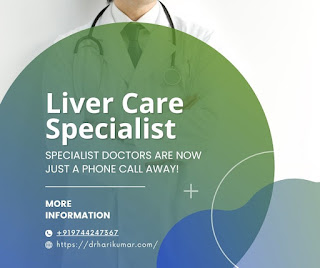Peptic Ulcer: Causes, Symptoms & Complete Treatment Guide for a Healthier Digestive System
Peptic ulcer disease remains one of the most common digestive conditions affecting millions of people worldwide. Despite advances in medical science, many individuals still struggle with persistent stomach pain, acidity, bloating, and digestive discomfort—symptoms that may indicate an underlying ulcer. This detailed guide explores everything you need to know about peptic ulcers, including causes, risk factors, diagnosis, treatment options, prevention tips, and lifestyle changes that promote long-term healing.
Whether you're experiencing recurring acidity or want to understand this condition better, this comprehensive guide will equip you with the clarity and knowledge you need.
1. What Is a Peptic Ulcer?
A peptic ulcer is an open sore that forms on the inner lining of the stomach, upper small intestine, or lower esophagus. These areas are normally protected by a mucus barrier, but when digestive acids overpower this barrier, the lining becomes vulnerable and develops ulcers.
Types of Peptic Ulcers
-
Gastric Ulcer – forms in the stomach lining
-
Duodenal Ulcer – occurs in the upper part of the small intestine
-
Esophageal Ulcer – develops in the lower esophagus due to acid reflux
Although these ulcers differ in location, their symptoms can overlap significantly.
2. What Causes Peptic Ulcers?
Peptic ulcers develop when the protective layer of the digestive tract is weakened or damaged. Several factors contribute to this breakdown.
2.1. Helicobacter pylori (H. pylori) Infection
One of the most common causes, H. pylori weakens the mucous lining and increases acid sensitivity. Many people contract this infection in childhood, and it can remain dormant for years before causing symptoms.
2.2. Long-term Use of NSAIDs
Regular or prolonged use of non-steroidal anti-inflammatory drugs can irritate the stomach lining, leading to ulcer formation.
Common NSAIDs include:
-
Ibuprofen
-
Aspirin
-
Naproxen
These medications reduce the protective mucus layer, making the stomach more susceptible to acid damage.
2.3. Excess Stomach Acid Production
Conditions that increase acid levels in the stomach—such as stress, genetics, and certain metabolic disorders—can contribute to ulcer development.
2.4. Lifestyle Factors
While not the primary cause, the following factors worsen ulcers:
-
Smoking
-
High-stress lifestyle
-
Excessive alcohol consumption
-
Frequent consumption of spicy, acidic, or fried foods
2.5. Other Less Common Causes
-
Certain medical conditions such as autoimmune disorders
-
Long-term steroid use
-
Chemotherapy medications
3. Symptoms of Peptic Ulcers
Peptic ulcer symptoms can vary from mild discomfort to severe pain. Early recognition is crucial to prevent complications.
3.1. Common Symptoms
-
Burning or gnawing stomach pain
-
Bloating and abdominal discomfort
-
Frequent acidity or heartburn
-
Indigestion
-
Nausea or vomiting
-
Feelings of fullness even when eating small meals
Pain may worsen on an empty stomach and may temporarily improve after eating.
3.2. Severe Symptoms (Require Immediate Medical Attention)
-
Vomiting blood
-
Dark, tarry stools
-
Sudden severe abdominal pain
-
Unexplained weight loss
-
Difficulty swallowing
These could indicate complications such as internal bleeding or perforation of the stomach wall.
4. Diagnosis of Peptic Ulcer Disease
Accurate diagnosis ensures proper treatment. A healthcare professional may order one or more of the following:
4.1. Endoscopy
A thin tube with a camera is inserted to examine the stomach and detect ulcerations. It is considered the gold standard for diagnosis.
4.2. H. pylori Tests
-
Blood test
-
Breath test
-
Stool antigen test
These detect the presence of H. pylori infection.
4.3. Imaging Tests
-
X-ray with contrast
-
CT scan
These may be used when complications such as perforations are suspected.
5. Treatment Options for Peptic Ulcers
Treatment depends on the underlying cause, severity of symptoms, and whether complications are present.
5.1. Medication
-
Antibiotics – for H. pylori eradication
-
Proton Pump Inhibitors (PPIs) – reduce acid production
-
H2 Blockers – decrease acid secretion
-
Antacids – provide short-term relief
-
Cytoprotective Agents – protect the stomach lining
Treatment typically lasts 2–8 weeks, depending on ulcer severity.
5.2. Lifestyle Modifications
Adopting healthy habits significantly speeds up healing:
-
Avoid spicy, oily, and highly acidic foods
-
Reduce caffeine
-
Eat smaller, frequent meals
-
Avoid smoking and alcohol
-
Drink plenty of water
-
Manage stress through yoga, meditation, or breathing exercises
5.3. Dietary Changes
Foods that promote healing include:
-
Green leafy vegetables
-
Bananas
-
Probiotics (yogurt, kefir)
-
Oats and whole grains
-
Ginger
-
Turmeric
Avoid heavy, fried, or acidic foods that irritate the stomach.
5.4. Surgical Treatment
Surgery is considered when ulcers become life-threatening due to:
-
Severe bleeding
-
Perforation
-
Obstruction of the digestive tract
-
Non-healing ulcers even after treatment
6. Complications of Untreated Peptic Ulcers
Avoiding timely treatment can lead to major health issues such as:
-
Severe internal bleeding
-
Stomach or intestinal perforation
-
Blockages or swelling in the digestive tract
-
High risk of infection
-
Long-term inflammation
Early diagnosis and treatment are essential to prevent these complications.
7. Prevention Tips
Minimize your risk by:
-
Reducing stress
-
Avoiding unnecessary NSAIDs
-
Choosing healthier, balanced meals
-
Avoiding smoking
-
Practicing good hygiene to reduce H. pylori transmission
-
Staying hydrated
Leading a healthy lifestyle significantly reduces the chances of developing ulcers.
8. Living with Peptic Ulcer Disease
With proper care, medications, and lifestyle modifications, most ulcers heal completely within weeks. Pay attention to your digestion, eat mindfully, and monitor any symptom changes.
Ulcers are treatable, and early action ensures long-term digestive health.




Comments
Post a Comment